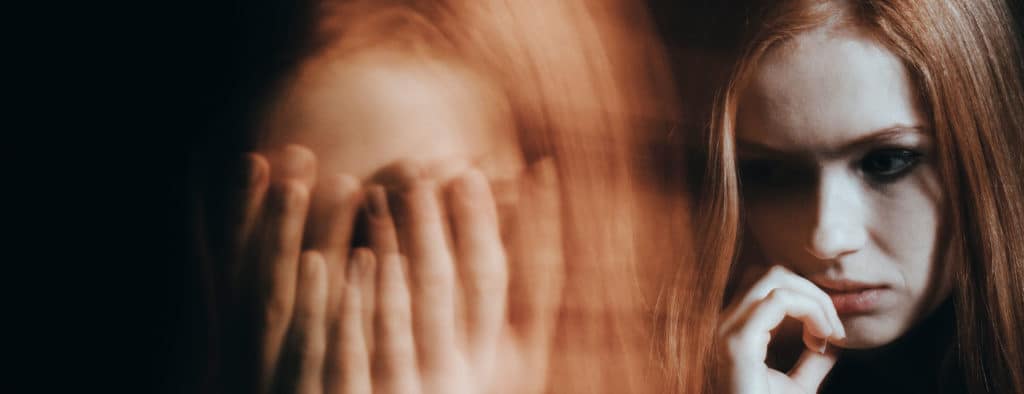What’s the difference between psychopathy and schizophrenia?
24th February 2018
Although schizophrenia and schizoaffective disorder both share the same prefix, they’re actually separate conditions from one another. They both fall within the criteria of psychotic disorders within the Diagnostic and Statistical Manual of Mental Health Disorders (DSM-5), but both present in different circumstances, despite there being some overlap between the two. But, of course, being in the same categorisation of mental health disorders, there are some notable similarities. These include core psychotic symptoms such as: hallucinations, delusions, and disorganised thinking. However, there are some important differences that mark each one out as their own condition.
What is Schizophrenia?
Schizophrenia is an acute form of mental illness that affects the proper functioning of the brain and its cognitive abilities. This often leads to persistent and chronic problems with things such as disordered thoughts and irregular behaviours that can also result in an inability to enjoy an independent life. In most cases, a diagnosis of schizophrenia usually requires a lifetime of care and medical treatment for the affected individual.
As such, people who suffer from the condition often have trouble performing well in school, in work environments, relationships and society at large. Schizophrenia has in the past been confused with either split or multiple personality disorder. However, it is neither of these things. It’s a form of psychosis in which the individual in question has trouble distinguishing what they’re imaging from what’s actual reality.
Symptoms
Schizophrenia differs from many other conditions in that its symptoms are divided into two subgroups – positive and negative. However, it’s important to note that this doesn’t denote whether the symptoms are good or bad. But instead, it refers to how these symptoms present themselves.
Positive Symptoms
Positive symptoms refer to those that are active and are having an immediate and noticeable effect on the schizophrenic person. The reason they are “positive” is in reference to the fact that they are adding to that person’s day-to-day existence. Here are some of the most common positive symptoms and how they present:
Hallucinations: Although you may think of hallucinations are fairly self-explanatory, they’re not as one dimensional as you might think. They’re not simply a visual medium. But rather when a person is in the midst of a full-blown hallucination, it can include sights, sounds, smells, as well as intense emotional reactions relating to those things. The most common hallucination is hearing voices. They could be threatening, reassuring or anything in between.
Delusions: The delusions experienced are often rooted in false beliefs that are significantly different from what is accepted in ‘normal’ social and cultural thinking. When these are at play, they can result in a very fixed point of view. An example might be that the affected individual may believe that they’re at the centre of a government conspiracy or be aware of information of great importance that must be shared with the rest of the work at all costs.
Disorganised Speech: This relates to inconsistent patterns of speech that make it difficult for someone to be understood. For example, affected individual speech patterns may be disjointed, they may use words in the wrong context, and potentially even slur their speech. However, that does not mean that what is being shared is any less meaningful to the person speaking the words. What they’re experiencing is very real to them.
Negative Symptoms
Negative symptoms, on the other hand, are defined as characteristics that should be present but appear to be lacking. Examples of negative symptoms include: decreased emotional expression and a lack of initiation and being goal-oriented. However, these can also extend to cognitive functions such as: concentrating and remembering.
What is Schizoaffective Disorder?
Schizoaffective disorder is also a chronic mental health condition that combines elements of psychosis, which includes hallucinations and delusions but also symptoms of mood disorders (e.g. mania and depression). That means that a common diagnosis can also include bipolar-type of depressive-type symptoms.
However, cases of schizoaffective disorder are relatively rare with the condition believed to affect only 1% of the population. This number is even less than the people affected by schizophrenia and forms of mood disorder such as bipolar. Current research suggests that women are slightly more susceptible to developing the disorder, while men tend to display symptoms at a younger age.
Symptoms
Unfortunately, the symptoms of schizoaffective disorder tend to be quite severe and exist on quite a wide spectrum from person to person. Not every person will display every symptom or as intensely. The symptoms fall into three categories: depressive symptoms, manic symptoms and schizophrenic symptoms.
Depressive Symptoms
Psychological: These include feelings of sadness, worthlessness, hopelessness, restlessness, apathy, a loss of interest in regular activities, concentration issues, guilt, self-loathing, suicidal thoughts.
Physical: Loss of appetite, weight loss or gain, issues in regulating sleep patterns.
Mania
Psychological: Ricky or self-destructive behaviour such as reckless spending, driving etc. Feelings of intense euphoria, irritable mood, racing thoughts, inflated sense of ego, becoming easily distracted.
Physical: These symptoms can include increased energy and/or being more active than usual, which can extend physical exertion as well as talking, working and engaging in events etc. Sleep patterns can also be affected.
Psychotic Symptoms
Psychological: These can include paranoia, delusions, hallucinations, disorganised thinking, impaired cognition relating to memory and reasoning abilities as well as decreased motivation ad apathy
Physical: These can include compromised or impaired motor movements and also poor hygiene.
Causes
Unfortunately, as of the time of writing, there is no confirmed cause of schizoaffective disorder. However, there is a theory that has been proposed which suggests it can be the result of a number of variables that affects the brain during the development in the womb and throughout the maturation process after birth, through adolescence and into adulthood. These include:
- Genetics
- Brain Chemistry
- Everyday Stresses of Life (Deaths in family, loss of job etc, relationship issues)
- Use/Overuse of Psychoactive Drugs
- Viral Infections
- Birth Defects
Diagnosis
As schizoaffective disorder has so much in common with other conditions, it can be hard to provide an accurate diagnosis. In many instances, it can be incorrectly diagnosed as simply being bipolar or schizophrenia. This is why it’s so important to provide as much information about your medical and mental health history to your medical practitioner as possible. In order to receive a diagnosis, you will need to have exhibited a period a mood disorder (depressive and/or mania) for at least a period of two weeks along with at least two of the following symptoms: delusions, hallucinations, disorganisation, and “negative” symptoms.













